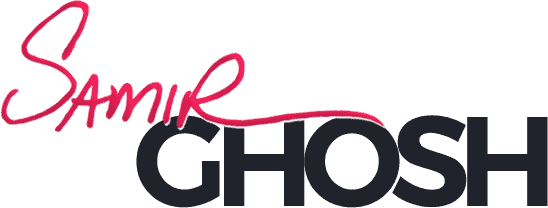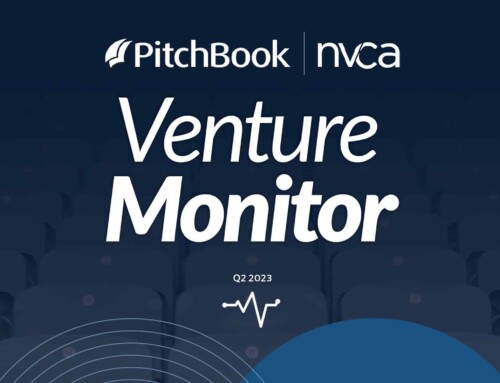During a humanitarian crisis, it’s difficult to focus on business. However, economics also affects lives. In fact, it’s not only our duty to ourselves, employees, and investors, but to the economic community to ensure our businesses survive, thrive, and contribute to society.
Fortunately, there is U.S. federal government assistance through the C.A.R.E.S. (Coronavirus Aid, Relief, and Economic Security) Act which may help startups, particularly regarding cash flow during this current Coronavirus economic period. And there are online resources such as the US Senate’s Small Business & Entrepreneurship committee’s “The Small Business Owner’s Guide to the CARES Act” to navigate the options.
This post takes a look at what a startup and it’s leaders can do to shift focus and priorities within the current economic and business environment affected by the Coronavirus pandemic to protect and optimize the business. Of course, some businesses will experience increased demand (e.g., virtual meeting software); others, can perhaps pivot to find faster growth; the rest may need to pivot (at least temporarily) to survive.

Hope
How normal will “normal” be when we return to it? Some things will return pretty much to the way they were. Some things will never return, either due to irreparable harm or due to preferred or necessary alternatives. Some businesses will not recover, so sadly some people may remain unemployed or underemployed for a period. We’re social beings, so we’ll be back to socializing, eating at restaurants, parties, baseball games. But will we hug as much? Eat as close to strangers in restaurants? Get temperature screened before entry to larger social settings?
The good news is that history has shown that similar economic shake ups have forced change and enabled notable startups. For example, these are just some of the successful startups founded between October 2008 and June 2009 during the Great Recession:


The Pivot Hierarchy
A lot is written about the importance of market segmentation, but I’m surprised by how little prescriptive guidance is given. Segmenting by vertical industry, geography, or size are easy, but not necessarily the most effective for your business. I recommend looking at four dimensions in creating segments:
- Use Case
- Value Proposition
- Buying Process
- Reach (how to find and communicate with your prospects)
Usually, a difference in any of these four will require different marketing strategies and/or tactics. (More on this in another future post.) However, these same attributes are helpful in brainstorming new business ideas…as well as pivoting an existing business.
The “Changes” section following this one also provides thought-provoking real-world examples of possible shifts we’ll be seeing in these dimensions.

Reach
Perhaps the way you reach your existing target segments and buyers has / is changing. For example, if you normally generate leads via trade shows, you can probably expect fewer and or less attended trade shows at least temporarily. Perhaps you should focus more resources on secondary or new channels.
Buying Process
Maybe customers in your existing target segments have changed their buying processes or at least priorities. For example, perhaps due to remote supply chain disruption, your customers are now more likely to purchase centrally (or visa versa). Or perhaps budget shifts within your customers have changed the decision maker. See The Business Value QuadArrow for help in comprehensively thinking about all of the points of value you may deliver and the respective buying processes.

Value Propositions
In times of economic or market uncertainty many businesses stop investing and focus on cost containment. To the appropriate constituents within your target prospects, consider emphasizing the value propositions that now have the highest priority — e.g., reducing expenses, remote work, etc. Again, The Business Value QuadArrow can help you think about the different cost centers (B2B) or personas (B2C) you might consider.
Use Cases
Sometimes, there may be entirely new use cases within your segments. An obvious example is virtual conferencing. Prior to many workers working from home, virtual conferencing applications may have been primarily used only by distributed teams, e.g., remote sales meetings with corporate headquarters. Today, virtual conferencing may have become critical for many other uses within the company, perhaps even more existential.
Segments
New opportunities may even open up in completely new market segments. For example, if your drone-based delivery service previously focused on making urgent medical deliveries, now you might find whole new segments or industries that have even greater demand for your service.
The further you get down this Pivot Hierarchy, the greater the potential opportunity is likely to be. After all, when new use cases or even segments unfold due to market or economic changes that may become enduring, you may be well poised to enable disruption.

Changes
There’s plenty of talk about what will and will not go back to “normal.” Following are just some ideas on things that may not go back 100% to the way they were. Perhaps they’ll kick off some ideas for your pivot.
- Remote & distance: Some people may now prefer to work from home. Schools at all levels will have to have some distance learning capabilities. What new challenges does that provide at work or at home? Reduced business travel? Bandwidth requirements for video conferencing? Looking good for video conferences? Meeting productivity? Home sanity?[One note of caution: businesses should not conflate productivity increases seen recently from shelter-in-place that are due to lack of employee distractions (i.e., fewer personal activity options) versus due to working from home.]
- Personal finances: Sadly, retirement resources may get reduced for some. They might need to work longer or retire later. Will then need new income sources? Introduce them to gig work? Financial management?
- Virtual large gatherings: Timing back to “normalcy” is likely to be gradual. New virtual versions of any group gathering may be necessary. Can virtual versions optimize in new ways? Virtual conferences? Movie theaters? Sporting events or concerts? Courts? Markets? Government?
- Mass transportation: Alternative forms of transportation (e.g., Elon Musk’s Hyperloop and Boring Company, or autonomous vehicle convoys) may get boosts if they offer “distanced” public transportation. Existing public transportation options with existing infrastructure and assets will still be most cost effective, so how can they be improved? Reduce germ spread? Reduce crowd congestion — waiting for trains or in DMV offices?
- Delivery services: We’ve seen the WebVan promise start to come to fruition with rapid increases in food (prepared and grocery) delivery services. Will this be a requirement for any restaurant or supermarket to survive? A la PinkDot, will delivery services expand to other products?
- Contingency supply chain: Groceries, staples, and PPE shortages have shown the risks of supply chain dependencies borne from decades of comparative advantage optimization. How can we provide backup supply avenues without sacrificing optimization?
- DIY: Farhad Manjoo was not the only do-it-yourself haircut. My own went surprisingly uncatastrophically. With a bit of help (from technology?), it could possibly go quite competently.
- Disease mitigation: Obviously, much effort and resource are going into prevention (vaccines) and treatment. Humans are social beings, so I suspect the pressure will be to find ways (e.g., bluetooth contact tracing) to get back to usual versus lots of social change. But what’ll be the impact to privacy?
These are just some example categories of change. What else might not return 100% back to “normal”? How does this impact your business? I’d love to hear your thoughts.








Leave A Comment